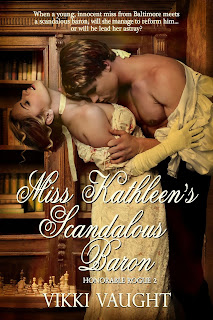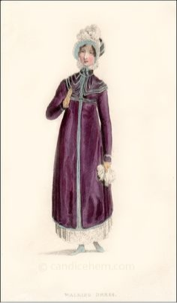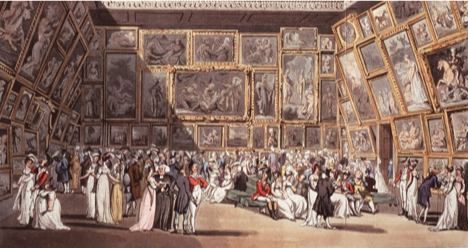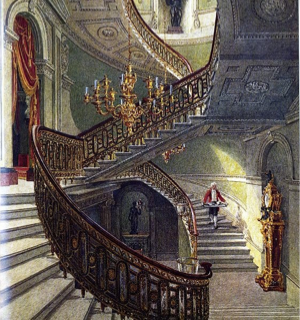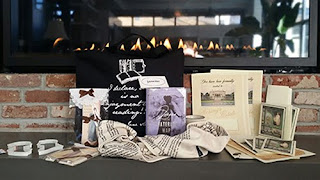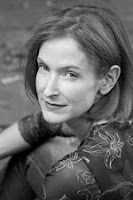I'm delighted to welcome Sheri Cobb South with a glimpse inside her novel, Dinner Most Deadly, and an insight into the relationship between reader, author and characters!
Congratulations, Linda, on winning the giveaway and thank you to all who entered!
---oOo---

Last fall marked the release of Dinner Most Deadly, the fourth book in my mystery series featuring Bow Street Runner John Pickett. I’ll admit, this book made me nervous in a way the others had not. I knew from the first that I was asking readers to suspend a great deal of disbelief in accepting that a Bow Street Runner, even a young and handsome one, might become romantically involved with a widowed viscountess. In fact, I felt this scenario was well-suited for a series, as it would allow for the gradual development of a relationship that might be difficult to pull off in a single title. Not that it takes John Pickett long to succumb: he’s smitten from the moment he first sees Julia, Lady Fieldhurst, standing over the body of her husband (In Milady’s Chamber), and it’s that seemingly impossible romantic interest that makes him all the more determined to prove her innocence in the matter of Lord Fieldhurst’s murder. Over the course of the series, he pines hopelessly, while her feelings for him slowly blossom from gratitude to friendship to something more, something she isn’t quite ready to name; the difference between their respective stations is just too great. When an innocent masquerade as man and wife while in Scotland (in Family Plot) results in the possibility of their being legally bound in a Scottish marriage by declaration, Julia is horrified by what Pickett must endure in order to procure an annulment, but an actual marriage between them is out of the question—isn’t it?
And that’s what I was nervous about. As with all the books, the mystery is resolved, but the developing romance carries over—or, in this case, ends on a cliffhanger. I was braced for complaints of “sequel bait,” but to my relief, they haven’t come, at least not to any noticeable degree. Instead, I got a totally different, and unexpected, reaction from readers: They’ve been emailing me with suggestions as to how John and Julia might get together. It’s a bit overwhelming to realize that readers are that invested in the future of these fictional characters. When I told my son about this, even Trevor—who at twenty-three is utterly uninterested in his mother’s literary endeavors—was impressed. He said, “Mom, that’s the kind of thing people were doing before the release of the new Star Wars movie!”
And that scares me a little, maybe even more than the release of Dinner Most Deadly. When expectations are high, there’s a greater possibility that readers will be disappointed with the resolution, which comes this summer when the next book, Too Hot to Handel, is released. There’s always a chance that readers will prefer their own “what if” scenarios over the one I offer them. But if that’s the price of success, I’ll gladly pay it!
Excerpt from Dinner Most Deadly:
“Ah, yes, annulment of a Scottish irregular marriage,” said Mr. Crumpton, seeking recourse to his papers. “Scottish irregular marriages are perfectly legal in England, but because of their, er, irregularity, they are more likely to be challenged and, if challenged, more likely to be overturned. As you might guess, such marriages are usually disputed by the families of the bride or, less frequently, the bridegroom, usually when a fortune or, in the latter case, a title is involved. Challenges are more likely to be successful if there are other discrepancies present as well: one party being underage, perhaps, or falsifying other pertinent information—being closely related by blood, for example, or already being legally wed to another. I gather none of these applies in this case?”
Pickett and Lady Fieldhurst exchanged looks, then turned back to the solicitor and shook their heads.
“A pity, that; it might have saved us a great deal of trouble,” remarked Mr. Crumpton, consulting his papers once more. “Now, as you may not be aware, it is no easy thing to dissolve a marriage, even an irregular one. Marriages are meant to last ‘until death do us part.’ There must be grounds—compelling reasons, that is—why the marriage can and should be nullified.”
“But—but we haven’t done anything!” insisted Lady Fieldhurst, blushing. “I mean—that is—we haven’t—”
Mr. Crumpton permitted himself a smile. “It is a common misconception, your ladyship, that a lack of consummation constitutes grounds for annulment or divorce, but I fear it is rather more complicated than that.”
“Then what are the possible grounds?” she asked.
The solicitor ticked them off on his fingers. “The first is fraud, which we have eliminated. The second is incompetence under the law, which includes being underage.” He turned to look at Pickett. “I believe we have established that you are over twenty-one years of age, Mr. Pickett?”
“These three years and more,” said Pickett, perhaps understandably annoyed to have his lack of years dredged up yet again.
“Just so,” said Mr. Crumpton, nodding. “Incompetence under the law also includes insanity, which I daresay we can also rule out,” he added with an indulgent smile.
“I don’t know about that,” muttered Lady Fieldhurst. “I think I must have been insane to think of escaping to the Scottish coast under an assumed name in the first place.”
Mr. Crumpton wagged his finger at her. “I fear you gave the Fieldhursts a rare turn over that escapade, your ladyship, but that in and of itself hardly suggests an unstable mind. No, I believe we can rule out insanity as possible grounds for annulment.”
“What does that leave?” asked Pickett, weighing the wild hope that they would be forced to let the marriage stand against the bitter knowledge that his wife would hate him forever if it did.
For the first time in the interview, Mr. Crumpton’s professional demeanor faltered. “The only possibility that remains is, er, that is, it involves consummation of the union.”
“But you just said a lack of consummation did not constitute grounds,” protested Lady Fieldhurst.
“No, but if either party should prove unable to—that is, to be incapable of—” He took a deep breath and started over. “Your ladyship, I must remind you that you and the late Lord Fieldhurst were married for six years. If, during that time, it had come to light that you were—were incapable of participating in that act which might have given your husband the heir he desired so desperately, he would surely have sought such an annulment for himself years ago.” He turned to Pickett, his eyebrows raised expectantly. “Such being the case, that only leaves . . .”
As the solicitor’s implication dawned, Pickett flushed a deep red.
Lady Fieldhurst was equally embarrassed, but considerably more vocal. “You cannot ask Mr. Pickett to—to—” Words failed her. She broke off and tried again. “Mr. Pickett may not have been married, but I daresay there is a female somewhere who could destroy such a claim simply by coming forward and—and—”
“As a matter of fact,” Pickett said miserably, “there isn’t.”
“There isn’t?” echoed Lady Fieldhurst.
Pickett shook his head and prayed for the floor to open up and swallow him.
“There isn’t,” she murmured, regarding him with new eyes.
“But,” he added hastily, “that isn’t to say I couldn’t—that is, I—I have no reason to suppose that—that all my parts are not—not in good working order.”
“Oh, my.” She snatched up one of Mr. Crumpton’s legal papers and began fanning herself with it. “Oh, my.”
Buy the book
About the Author
At the age of sixteen, Sheri Cobb South discovered Georgette Heyer, and came to the startling realization that she had been born into the wrong century. Although she doubtless would have been a chambermaid had she actually lived in Regency England, that didn’t stop her from fantasizing about waltzing the night away in the arms of a handsome, wealthy, and titled gentleman.
Since Georgette Heyer was dead and could not write any more Regencies, Ms. South came to the conclusion she would simply have to do it herself. After honing her craft on five young adult books for Bantam’s long-running Sweet Dreams series (the first of which, Wrong-Way Romance, is a collector's item today), she tried her hand at the genre she had loved for so long. Her first Regency romance, The Weaver Takes a Wife, was published in 1999, to critical acclaim.
In addition to her Regency romances, she is also the author of a series of Regency mysteries featuring idealistic young Bow Street Runner John Pickett, described by All About Romance as “a little young, but wholly delectable.”
A native and long-time resident of Alabama, Ms. South recently moved to Loveland, Colorado, where she has a view of Long’s Peak from her office window.
Meet Sheri Online
Written content of this post copyright © Sheri Cobb South, 2016.

